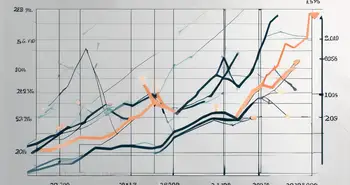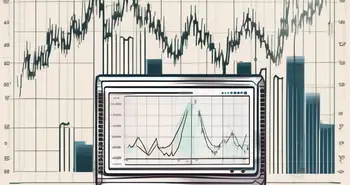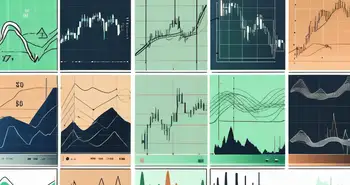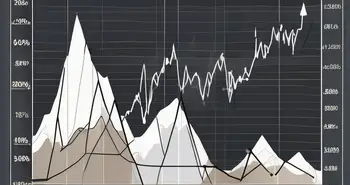Expert Gold Trading Signals

Gold trading signals play a crucial role in helping traders navigate the dynamic and often volatile gold market. As an expert in this field, I understand the significance of these signals and how they can be the key to your success. In this article, I will guide you through the intricacies of gold trading signals, explain how to interpret them, share strategies for using them effectively, and help you choose a reliable signal provider. So, let's dive right in!
The Basics of Gold Trading Signals
What are Gold Trading Signals?
Gold trading signals are indicators or triggers that provide valuable information about the movement of gold prices. These signals can be generated by expert analysts who closely monitor market trends, analyze historical data, and employ various technical and fundamental analysis tools.
Expert analysts utilize a combination of quantitative and qualitative methods to interpret market data and identify patterns that may indicate potential price movements. By examining factors such as historical price trends, trading volumes, and market sentiment, analysts can generate signals that help traders make more informed decisions.
Types of Signals:
- Technical Signals: Based on technical analysis tools like moving averages, RSI, MACD, and candlestick patterns.
- Fundamental Signals: Derived from economic data, geopolitical events, and market sentiment.
- Sentiment Signals: Gauged from market sentiment indicators like the Commitment of Traders (COT) reports.
It's important to note that gold trading signals are not guarantees of success, but rather powerful tools that assist traders in making informed decisions. By understanding these basics, you can enhance your trading skills and potentially increase your profitability in the gold market.
With Morpher‘s advanced charting tools and access to all relevant market news directly on the platform, you have everything you need to trade gold effectively. Plus, you have real-time Gold market insights ready anytime you need them! Start utilizing these powerful resources today to take your gold trading to the next level. Sign up now and begin your journey towards more informed and profitable trading!
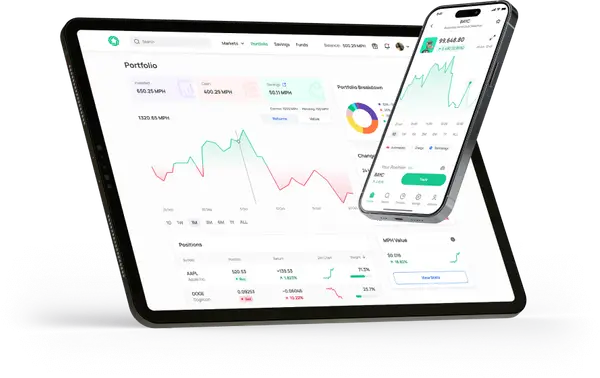
Importance of Gold Trading Signals in the Market
The gold market is influenced by a multitude of factors, including geopolitical events, economic indicators, and investor sentiment. Keeping track of all these variables can be overwhelming, especially for beginner traders. Gold trading signals simplify this process by providing insights into market trends, potential entry and exit points, and risk management strategies.

Factors Influencing Gold Prices with Examples of Real-Life Events
- Geopolitical Events:
Brexit Referendum (2016): The uncertainty surrounding the Brexit vote led to increased demand for gold as a safe haven. Gold trading signals at the time indicated a bullish trend, with many analysts recommending buying gold. This signal was correct, as gold prices surged following the referendum results.
US-Iran Tensions (2020): Rising tensions between the US and Iran caused gold prices to spike as investors sought safe havens. Bullish signals based on these geopolitical risks helped traders capitalize on the price increase.
- Economic Indicators:
2008 Financial Crisis: During the financial crisis, bearish signals such as declining moving averages and increasing volatility indicated a downturn in gold prices. However, as the crisis deepened, bullish signals emerged, leading to a significant increase in gold prices as investors sought safe-haven assets.
Federal Reserve Rate Cuts (2019): The Federal Reserve's decision to cut interest rates led to a weakening of the US dollar and a corresponding rise in gold prices. Trading signals based on interest rate trends and dollar strength helped traders navigate these changes.
- Investor Sentiment:
COVID-19 Pandemic (2020): Early in the pandemic, gold trading signals turned bullish as markets crashed and uncertainty soared. Traders who waited for confirmation from multiple indicators, such as rising gold prices and increasing volume, were able to capitalize on the subsequent rally in gold prices.
US Election Uncertainty (2020): Leading up to the US presidential election, investor sentiment was mixed, causing fluctuations in gold prices. Signals based on sentiment analysis helped traders manage their positions effectively.
How to Interpret Gold Trading Signals
Interpreting gold trading signals is crucial for making timely trading decisions. Here's a step-by-step guide to understanding both bullish and bearish signals.
Recognizing Bullish Signals
1)Identify Oversold Conditions:
RSI Indicator: If the Relative Strength Index (RSI) drops below 30, it indicates that gold is oversold.
Example: In 2008, during the financial crisis, the RSI for gold dropped below 30, signaling a potential buying opportunity as the market was oversold.
2) Look for Moving Average Crossovers:
50-Day and 200-Day Moving Averages: A bullish signal occurs when the 50-day moving average crosses above the 200-day moving average.
Example: In 2016, following the Brexit vote, the moving average crossover confirmed a bullish trend in gold prices.
3) Confirm with Volume Increases:
Rising Volume: An increase in trading volume can confirm a bullish signal, indicating strong market interest.
Example: During the early months of the COVID-19 pandemic, increased trading volume accompanied the rise in gold prices, reinforcing the bullish signals.
4) Check for Fundamental Triggers:
Economic Announcements: Positive economic data such as low unemployment rates or increased industrial demand can trigger bullish signals.
Example: In 2019, positive manufacturing data from China led to a short-term rally in gold prices, with trading signals based on this data indicating potential gains.
Recognizing Bearish Signals
1)Identify Overbought Conditions:
RSI Indicator: If the RSI rises above 70, it indicates that gold is overbought.
Example: Before the 2008 financial crisis, the RSI for gold rose above 70, signaling a potential selling opportunity as the market was overbought.
2) Look for Moving Average Crossovers:
50-Day and 200-Day Moving Averages: A bearish signal occurs when the 50-day moving average crosses below the 200-day moving average.
Example: In the lead-up to the US debt ceiling crisis in 2011, bearish moving average crossovers indicated a downturn in gold prices.
3) Confirm with Volume Decreases:
Decreasing Volume: A decrease in trading volume can confirm a bearish signal, indicating weakening market interest.
Example: Prior to the downturn during the 2011 debt ceiling crisis, trading volumes for gold decreased, supporting the bearish signals.
4) Check for Fundamental Triggers:
Economic Announcements: Negative economic data such as high unemployment rates or decreased industrial demand can trigger bearish signals.
Example: In 2020, negative retail sales data in the US led to a short-term decline in gold prices, with trading signals based on this data indicating potential losses.
Up-to-Date Analysis of Gold (XAU) Price Movements 2024
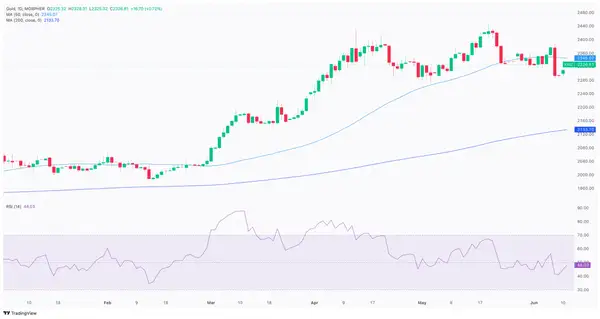
Observations
- Price Position Relative to Moving Averages:
The current price (2326.81) is slightly below the 50-day moving average (2345.07), suggesting recent downward momentum.
The price is well above the 200-day moving average (2133.70), indicating a long-term uptrend.
- Moving Average Crossover:
There is no current crossover between the 50-day and 200-day moving averages. However, the 50-day moving average is trending upward and is above the 200-day moving average, which is typically a bullish signal in the long-term trend.
- RSI Analysis:
The RSI is currently at 48.03, which is in the neutral range (30-70). This suggests that the market is neither overbought nor oversold. There are no immediate RSI signals indicating a strong bullish or bearish trend.
The Role of Technology in Gold Trading Signals
Automated Gold Trading Signals
With advancements in technology, automated gold trading signals are becoming popular. These signals are generated by algorithms and AI, analyzing vast amounts of data in real-time.
Benefits of Automated Signals:
- Speed: Instantaneous signal generation based on real-time data.
- Accuracy: Reduced human error and bias in signal generation.
- Consistency: Continuous monitoring and analysis of market conditions.
Future of Gold Trading Signals with AI and Machine Learning
The future of gold trading signals is intertwined with advancements in AI and machine learning. These technologies have the potential to revolutionize the accuracy and speed of signal generation.
Potential Advancements:
- Predictive Analytics: AI and machine learning algorithms can analyze historical data to predict future price movements.
- Adaptive Systems: Machine learning systems can adapt to changing market conditions and improve over time.
- Integration with Other Technologies: Combining AI with blockchain technology for enhanced transparency and security.
Choosing a Reliable Gold Trading Signal Provider
Good Signal Provider Checklist
Select a provider with a proven track record, transparent performance data, and a solid reputation.
✅ Track Record: Verify past performance.
✅ Expertise: Ensure experienced analysts.
✅ Reputation: Look for positive reviews from other traders.
Avoiding Scams in Gold Trading Signal Services
Conduct thorough research before committing to a signal provider. Beware of unrealistic promises and high-pressure sales tactics.
Red Flags
🚩 Unrealistic Returns: Promises of guaranteed high returns with no risk.
🚩 Lack of Transparency: No clear information on how signals are generated or the track record of the provider.
🚩 Pressure Tactics: High-pressure sales tactics pushing you to sign up quickly.
FAQ
What are gold trading signals?
Gold trading signals are indicators or triggers that provide valuable information about the movement of gold prices. They assist traders in making informed decisions and navigating the complexities of the gold market.
How do I interpret gold trading signals?
Gold trading signals can be interpreted as bullish or bearish, indicating potential price movements. Recognizing these signals and acting upon them in a timely manner is crucial for successful trading.
What strategies should I use with gold trading signals?
Timing your trades and balancing risk and reward are fundamental strategies when using gold trading signals. Additionally, adapting your trading strategies to the prevailing market conditions is crucial for success.
How do I choose a reliable gold trading signal provider?
Choose a signal provider with a proven track record, transparent performance data, and a solid reputation in the industry. Consider the level of analysis and expertise provided, and be cautious of scams and unrealistic promises.
What is the role of technology in gold trading signals?
Technology plays a vital role in the development and generation of gold trading signals. Automated signals driven by artificial intelligence and machine learning have the potential to revolutionize the accuracy and speed of signals.
What does the future hold for gold trading signals?
The future of gold trading signals is intertwined with advancements in AI and machine learning. These technologies can further enhance the accuracy and timeliness of signals, empowering traders in the gold market.
Ready to elevate your gold trading with the power of cutting-edge technology? Look no further than Morpher, the revolutionary trading platform that's changing the game. With Morpher, you can harness the insights from gold trading signals and apply them across a diverse range of markets, including stocks, cryptocurrencies, and more, all with zero fees and infinite liquidity. Embrace the future of trading with fractional investing, short selling without interest fees, and up to 10x leverage to amplify your trades. Plus, with Morpher's non-custodial wallet, you have complete control over your funds. Don't miss out on this unique trading experience built on the Ethereum Blockchain. Sign Up and Get Your Free Sign Up Bonus today, and start trading like a pro!

Disclaimer: All investments involve risk, and the past performance of a security, industry, sector, market, financial product, trading strategy, or individual’s trading does not guarantee future results or returns. Investors are fully responsible for any investment decisions they make. Such decisions should be based solely on an evaluation of their financial circumstances, investment objectives, risk tolerance, and liquidity needs. This post does not constitute investment advice.

Painless trading for everyone
Hundreds of markets all in one place - Apple, Bitcoin, Gold, Watches, NFTs, Sneakers and so much more.

Painless trading for everyone
Hundreds of markets all in one place - Apple, Bitcoin, Gold, Watches, NFTs, Sneakers and so much more.


